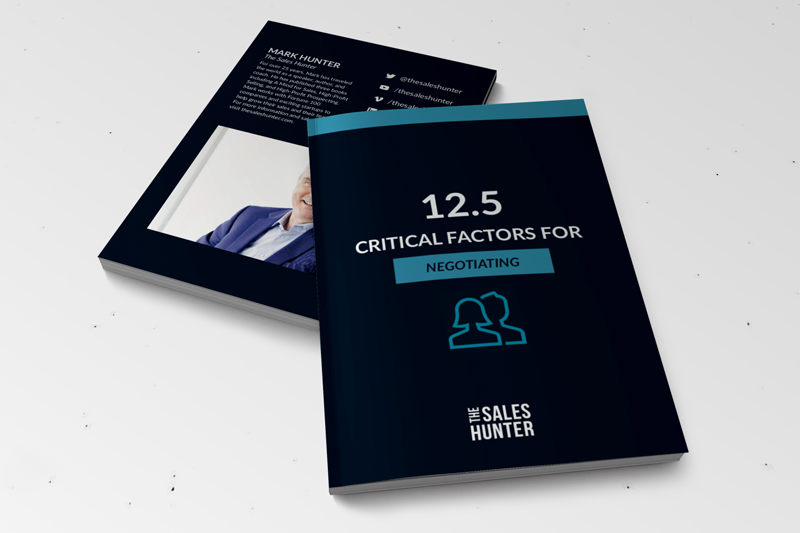Guest Post Monday! I’m excited to say that today we have Laura Stack, a productivity expert, offering spot-on insights about tackling the time problem. We all want more time to sell, right? In particular, sales managers can learn today from Stack’s wisdom regarding the best use of Microsoft Outlook. Even if you don’t use this tool, the below post is inspiring when it comes to finding processes that free up your time.
There will always be more things to do than time to do it. Working longer isn’t going to save you. How long has it been since you’ve left work at the end of the day and exclaimed, “My to-do list is completely done?” Probably never. It’s a never-ending battle.
The problem isn’t time shortage; it’s time usage. It doesn’t matter how long you work; it’s how you work. A 12-hour day can be more unproductive than a six- hour day. The question is: What are you busy at? Are you spending your time in ways that directly translates to revenue?
One of your goals — I assume — is to free up more time for client acquisition, such as asking for referrals, calling prospects, networking, etc. If you can figure out how to be more productive during the day and achieve greater value in less time, you can leave the office earlier and get a life.
One of the many ways advisors waste time during the day is with Microsoft Outlook (or whatever similar tool you use). I estimate people waste 30 minutes to 2 hours a day with incorrect or inefficient information management systems. Sometimes it’s a simple matter of not understanding what Outlook is capable of doing (Journaling, Notes, Customized Contact Forms, Task Tracking, etc.).
As a Microsoft Certified Application Specialist (MCAS) in Outlook, I estimate most people only understand and use 10-20% of Outlook’s capabilities.
As an example, I was recently hired by Montague Boyd, CFP, Senior Vice President, Investments at UBS Financial Services in Atlanta, to spend a day in his office. We found myriad ways the brokers and assistants could be more efficient individually and collectively, so we created a set of policies everyone agreed to follow:
1. When you have a request, send a Task Request instead of an email, so actions can be tracked by person, client or project.
2. Eliminate the group task list. Instead, individuals should use the “Assign Task” feature to send and track requests to their admins.
3. Use the Rules function with the Out of Office feature, so that when one of the assistants is absent, emails will automatically be forwarded to another member of the team. No orders will be missed in this fashion.
4. Create a backup/triage system for absences.
5. Assistants will use the Start Date in Tasks with the TaskPad feature in Outlook for a daily to-do list. Everyone will create and use the same tickler file system for paper to track an order through the entire process. By using these two features, when someone is absent, other team members will know exactly where work is located.
6. Keep relationship manager notes for every client contact. Use the Journal in Outlook to document every phone call or conversation with a Client, tagged to their Contact, so anyone can share and see the Contact’s Activities when talking.
7. Create a consistent scheme for Tasks by using Start and Due dates, priorities, the text field for instructions, and subject coding by client last name.
8. Share your tasks, calendar, email, and contacts folders, so everyone can help without leaving the desk.
9. Create a set of standardized email templates for new client letters, forms, and attachments; save them on the shared drive under home office/email templates for all to access. This will ensure consistency in communications across the office.
10. Take off the ringer for broker calls at the assistants’ desk except for those you cover.
As you can see, there were macro and micro issues that needed to be discussed and handled. We created policies around our agreements, so everyone would be consistent in the implementation after I left. Most powerful was Cosmo’s assertion that the assistants should be more proactive in telling the brokers what needed to change about the system to help the team be more productive.
With everyone being consistent, the assistants didn’t have to adjust to 12 different ways of doing things.
Then Boyd brought me back to the office again two months later. I did a one-hour presentation for the entire office and then spent 30-minute blocks in each broker’s office providing individual coaching. I sat down with each of them and reviewed ways they could work more efficiently and save time. I ended the day with the management team.
Boyd had this to say: “Your visit with our staff was amazing. More than I could have hoped for and just the right energizer to get us on track. The systems you helped us work out will keep us on track and our productivity numbers increasing. The staff sees a way to do their jobs and still have time to really communicate with our clientele. Your positive approach empowered all of us to seek higher levels and accomplish more. I estimate each staff member saves about 90 minutes a day, thanks to your work here. Thank you!” Montague Boyd, CFP; Senior Vice President, Investments; UBS Financial Services
We all know we can be more productive. When I ask, “What would you need to change about yourself in order to be more productive and increase sales?” everyone knows the answer. When I ask, “What would need to change in the office in order for you to be more productive?” everyone knows the answer. However, most people just sit around and stew about it but don’t do anything, even though they know exactly what needs to be done.
Instead, speak up. Vent your frustrations. Try different methods. Blow up a process. Get help when you need it. All of this effort will pay off handsomely in the way of increased sales, due to your ability to spend more time with clients and on those activities that will bring in revenues.
Laura Stack is a personal productivity expert, author, and professional speaker whose mission is to build high-performance productivity cultures in organizations by creating Maximum Results in Minimum Time®. She is the president of The Productivity Pro®, Inc., a time management training firm specializing in productivity improvement in high-stress organizations and the 2011-2012 President of the National Speakers Association. Since 1992, Laura has presented keynotes and seminars on improving output, lowering stress, and saving time in today’s workplaces. She is the bestselling author of several books. To have Laura speak at your next event, call 303-471-7401 or visit www.TheProductivityPro.com to sign up for her free monthly productivity newsletter. Copyright 2010.











